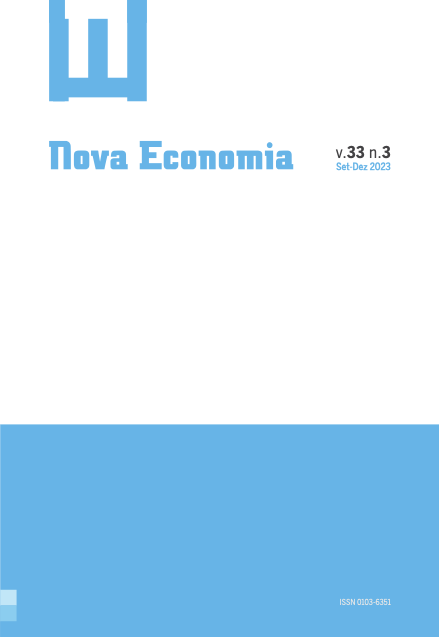Diferenças salariais dos trabalhadores rurais e urbanos dos estados do Amazonas e Pará
Resumo
Este artigo analisa as diferenças salariais entre trabalhadores rurais e urbanos do Amazonas e do Pará. Esta análise foi feita para os dois maiores estados da região Norte por possuírem características socioeconômicas e de mercado de trabalho distintas. Especificamente, verificou-se até que ponto o investimento em capital humano e os atributos não produtivos impactam as diferenças de rendimentos. Utilizou-se a Pesquisa Nacional por Amostra de Domicílios Contínua para 2011, 2013 e 2015. Através das metodologias de pseudopainel com Efeitos Fixos e Oaxaca-Blinder verificou-se que os trabalhadores mais escolarizados e experientes obtêm maiores ganhos salariais. Os trabalhadores urbanos recebem maiores salários do que os trabalhadores rurais, bem como aqueles que residem no Pará. No estado do Amazonas, o que impactou a diferença salarial foram os atributos não produtivos explicados pela segmentação no mercado de trabalho, como a Administração Pública e Outras Atividades em comparação com o setor Agrícola.
Downloads
Publicado
Como Citar
Edição
Seção
Licença
Copyright (c) 2023 Enimar Jerônimo Wendhausen, Marília Carvalho Brasil, Frederick Fagundes Alves, Lucas Vitor de Carvalho Sousa

Este trabalho está licenciado sob uma licença Creative Commons Attribution 4.0 International License.
Autore[a]s que publicam nesta revista concordam com os seguintes termos:
- Autore[a]s mantém os direitos autorais e concedem à revista o direito de primeira publicação, com o trabalho simultaneamente licenciado sob a Licença Creative Commons Atribuição 4.0 Internacional que permite o compartilhamento do trabalho com reconhecimento da autoria e publicação inicial nesta revista.
- Autore[a]s têm autorização para assumir contratos adicionais separadamente, para distribuição não-exclusiva da versão do trabalho publicada nesta revista (ex.: publicar em repositório institucional ou como capítulo de livro), com reconhecimento de autoria e publicação inicial nesta revista.
- Autores têm permissão e são estimulados a publicar e distribuir seu trabalho online (ex.: em repositórios institucionais ou na sua página pessoal) a qualquer ponto antes ou durante o processo editorial, já que isso pode gerar alterações produtivas, bem como aumentar o impacto e a citação do trabalho publicado (Veja O Efeito do Acesso Livre).




